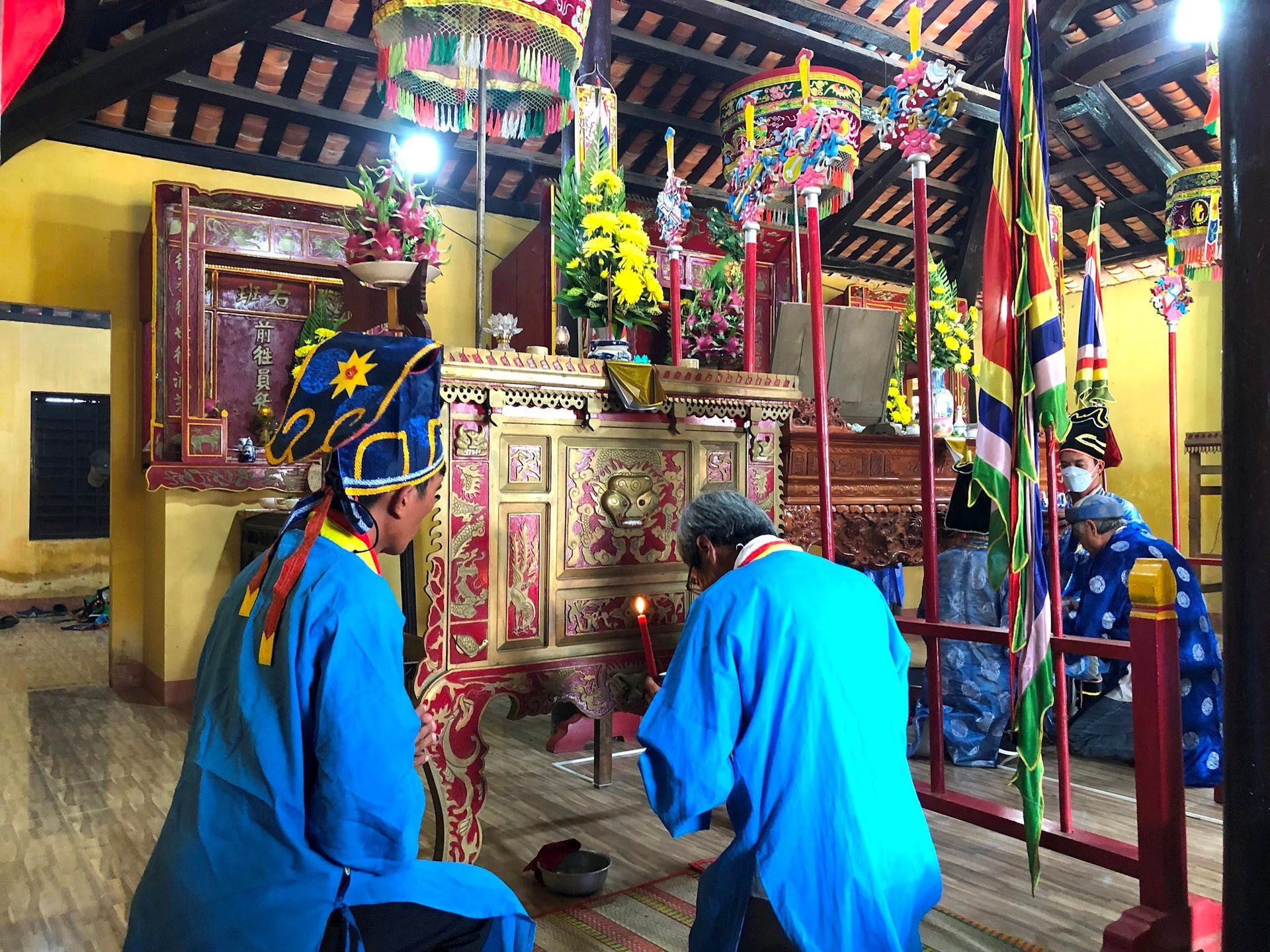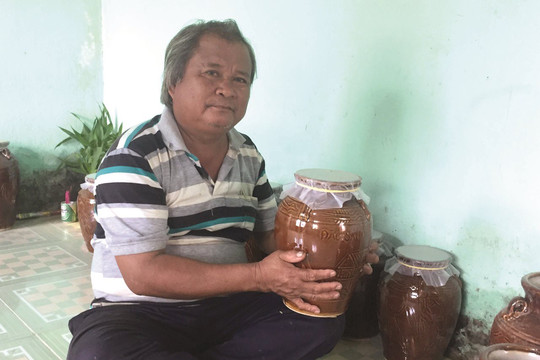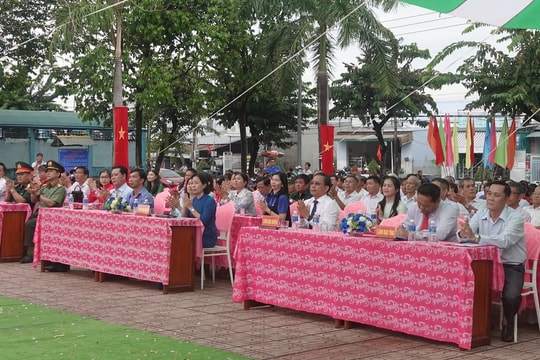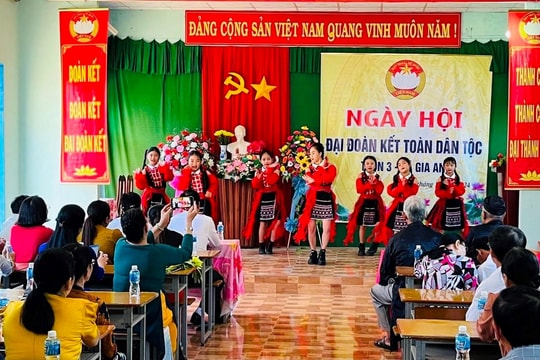In February, despite having more and more work on the paddy fields, many people in Ham Hiep commune do not neglect the spring offering ceremony at the communal house of Phu Hoi village – a long-standing traditional cultural ceremony to tribute to the Tutelary Emperor and help connect the community, strengthening village friendship.

As usual, after the ceremony, with a cup of warm tea, the village elders tell the old lore, as a way to teach the young people today how to carry out the offering ceremony. The voices of the elders are full of pride: The communal house was built in the 7th year of Thieu Tri (Year of the Goat in 1874). In the early days, this was the largest and most complete architectural complex in Binh Thuan with 9 “roofs”: Tam Quan gate, God-worshipping temple, Sage-worshiping temple, Vo Ca (front yard, where entertaining activities are performed), Tien Duong (front lobby, where the main altars are located), Hau Cat (back house), Group house, Guesthouse and Smokehouse (kitchen). In front of the communal house, there was a flagpole, a large lotus pond with a lovely wooden bridge spanning to form the entrance, surrounded by a citadel.

Spring Offering Ceremony.
During the resistance wars against the French and the Americans, this was the fiercest area, the area of dispute between allies and the enemy. Unable to occupy, the enemy destroyed some structures. After the liberation day, there are only the main parts of the God-worshipping temple, Tien Hien-worshiping temple, Group house, and so on left.
The remaining works still show the ancient architectural features clearly. The trusses hung on top of each other, extended, called the connecting truss system, are both flexible and firm, with an artistic feature that lightens the view. This is a major example of the application of connecting truss system in communal houses of the local area. The roofs in the communal house do not follow a certain framework, each roof is different. This can also be considered a complex and creative architectural style applied in the communal house of Phu Hoi village, which is very rare.
The communal house of Phu Hoi village worships Thanh Hoang Bon Canh (the local tutelary emperor), the sages who have patronized the people, founded the village, and built the communal house. It also worships Thien Y Ana Dien Ngoc Phi, the goddess of the Chams. Today, the communal house still preserves 5 ordinations bestowed by the Nguyen kings, which is considered a sacred treasure of the village and kept with utmost care. Phu Hoi communal house was ranked a national historical and cultural relic by the Government in 1995.
The five ordinations bestowed by the Nguyen Dynasty are still preserved in the communal house of Phu Hoi village.
For the people of Ham Hiep commune, the communal house of Phu Hoi village has become a precious and common property. Therefore, annually, on the 15th and 16th of the 2nd lunar month, they perform the Spring Offering Ceremony, then, on the 15th and 16th of the 8th lunar month, hold the Autumn Offering Ceremony to praise and pay tribute to the sages who have reclaimed the land and built the village.
Ms. Nguyen Thi My Linh - Head of the Vietnamese Fatherland Front of Ham Hiep Commune and Head of the Management Board of Phu Hoi Village Communal House said: “The Offering Ceremonies are not merely religious activities to pray for "national prosperity and people’s security", but also a cultural and spiritual feature of the people, expressing the tradition of respecting ancestors, honoring the merits of the national heroes who have contributed to building and protecting the homeland and the country, as well as the sages who have brought a prosperous and happy life to the people, at the same time, leading people to the tenet of "truth - goodness - beauty". For the past 3 years, due to the complicated development of Covid-19, the Offering Ceremonies has had to be held on a smaller scale, people also visit less often. However, the Ceremonies still keeps it reverence and dignification.”
Today, people in Phu Hoi feel proud of their beloved village, where a communal house imbued with history is located, where incense smoke still lingers on holidays and Tet, warming people's hearts when they recall their ancestors and origin.
“In the past, the communal house was not only the place where important events of the village took place but also a place where every family went to pray for blessing in the event of important matters. The Tutelary Emperor belongs to the spiritual world with supernatural authority. Because of his merits, he was respected by the people, relied on for protection and blessing. In order to preserve and uphold this traditional cultural feature, it is essential to provide better education in schools, from supplementing knowledge to organizing field trips and experience tours, so that the younger generation can understand and appreciate the beauty of traditional features" - Mr. Truong Van Thanh - a member of the Ceremonies Board of Phu Hoi communal house.







.jpg)



















.jpeg)

.jpeg)


.jpeg)


